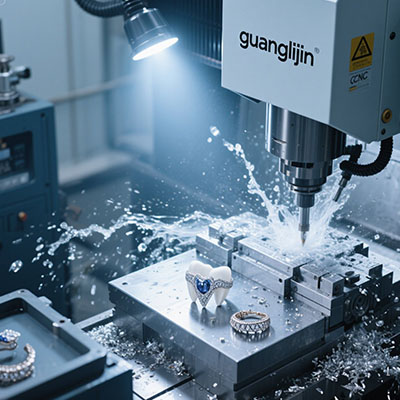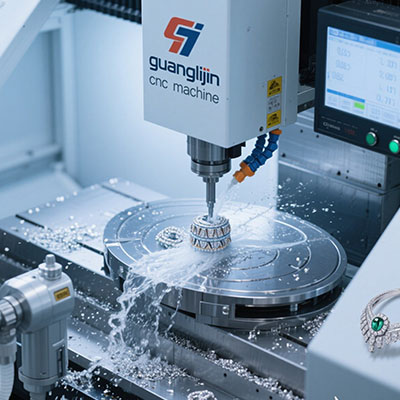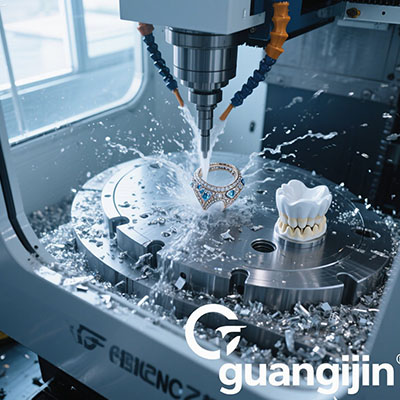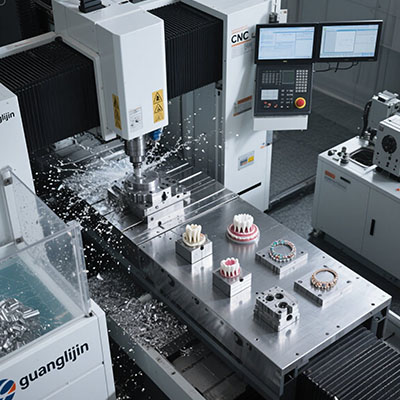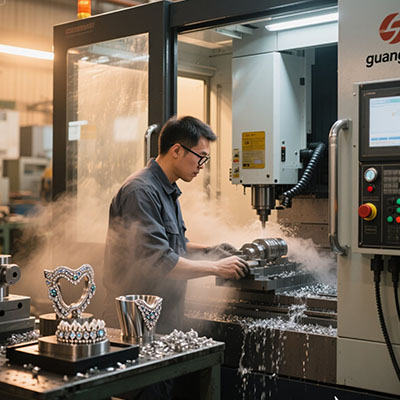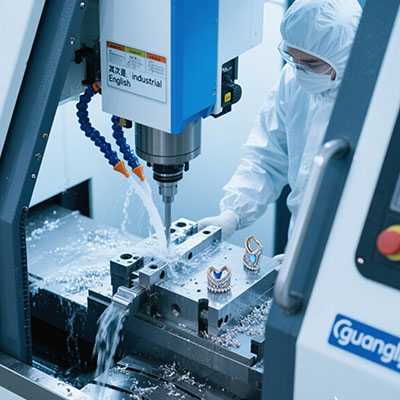Professional CNC Jewelry Polish Machine Solutions: Revolutionizing Modern Jewelry Finishing
The Contemporary Jewelry Finishing Challenge
Jewelry manufacturers today face unprecedented quality demands. Consumers expect perfect finishes with absolute consistency across collections. Manual polishing creates production bottlenecks and quality variations. These inconsistencies damage brand reputation over time. How can workshops maintain excellence while increasing production capacity?
Understanding CNC Jewelry Polish Technology
CNC jewelry polish machines represent the pinnacle of finishing technology. These computer-controlled systems automate the entire polishing process with precision. They maintain consistent pressure, speed, and movement patterns throughout operations. Advanced models handle complex geometries that challenge manual methods. Essentially, they transform artistic polishing into repeatable science.
Why Professional Equipment Matters
Investing in professional polishing equipment delivers transformative benefits. First, it eliminates quality variations between different operators. Second, it dramatically reduces training time for new technicians. Third, it increases output while maintaining exceptional quality standards.
Interestingly, a 2023 Jewelry Manufacturing Journal study revealed that workshops using CNC polishing achieved 54% fewer customer returns due to finish defects. That’s a massive quality improvement!
Additionally, these systems reduce material waste through precise control. This saves significant amounts of precious metals over time.
Traditional vs. CNC Polishing: Critical Comparison
Understanding both approaches helps make informed decisions. Traditional polishing relies entirely on artisan skill and experience. It works well for unique, one-off creations. CNC systems excel in production environments requiring absolute consistency.
| Aspect | Traditional Polishing | CNC Polish Machine |
|---|---|---|
| Consistency | Variable (artist-dependent) | Exceptional (program-controlled) |
| Training Time | Extensive (6-18 months) | Moderate (2-4 weeks) |
| Output Speed | Moderate | High (3-5x faster) |
| Complex Geometries | Challenging | Excellent handling |
| Initial Investment | Lower | Higher |
| Long-term ROI | Higher per-piece cost | Lower per-piece cost |
For commercial production, CNC systems provide superior value. They typically pay for themselves within 12-18 months through efficiency gains.
Key Features of Professional Polish Systems
Understanding system components aids selection decisions. The core is the precision motion control system with multi-axis capabilities. Digital interfaces manage complex programming and recipe storage. Adaptive pressure systems maintain consistent application across variations.
Advanced features enhance capabilities significantly. Vision systems automate quality inspection and adjustment. Automated compound management ensures perfect application. Temperature control prevents material damage during extended operations.
Selecting the Right Jewelry Polish Machine
Choosing appropriate equipment requires careful evaluation. First, analyze your primary materials and their characteristics. Precious metals demand different treatment than alternative materials. Second, consider production volume and piece complexity.
Also, evaluate available space, power requirements, and ventilation needs. Don’t forget about technical support and training availability. Ensure the manufacturer provides comprehensive service options.
Finally, consider future expansion needs. Select systems that can grow with your business. Modular designs offer excellent flexibility for changing requirements.
Step-by-Step CNC Polishing Procedure
Proper technique maximizes results and equipment longevity. Follow these steps for optimal performance:
Step 1: System Preparation
Clean all polishing wheels and work surfaces thoroughly. Verify machine calibration against manufacturer specifications. Precision begins with proper setup!
Step 2: Workpiece Fixturing
Secure jewelry pieces in specialized holders designed for your specific items. Ensure perfect alignment without stressing delicate components.
Step 3: Program Selection
Load appropriate polishing program for your material and desired finish. Modern jewelry polish machine units store dozens of recipes for different applications.
Step 4: Compound Application
Choose specialized compounds based on material and finish requirements. Apply with precision dispensers for consistent coverage and minimal waste.
Step 5: Cycle Execution
Initiate polishing cycle while monitoring initial results. Make micro-adjustments if necessary based on real-time feedback.
Step 6: Final Inspection
Remove polished pieces for thorough inspection under magnification. Clean with appropriate solutions to remove all compound residues.
Common CNC Polishing Mistakes
⚠Attention: Avoid incorrect program selection for materials. Using aggressive programs on soft metals causes excessive material removal and detail loss.
⚠Attention: Never neglect temperature monitoring. According to Precision Manufacturing Studies, over 40% of thermal damage occurs during extended polishing cycles without proper cooling.
⚠Attention: Don’t underestimate regular calibration needs. Precision systems require frequent verification to maintain micron-level accuracy.
Real-World Implementation: A Success Story
Our team implemented a CNC system for a specialty manufacturer in early 2024. They struggled with finishing consistency across their signature collections. We installed a professional jewelry polish machine with customized programming. The transformation was remarkable. Their rejection rate dropped from 17% to under 3% within weeks. Furthermore, production capacity increased by 48% without additional staff. This experience demonstrated the transformative power of automation technology.
Maintaining Your Polish System
Regular maintenance ensures peak performance and investment protection. Daily cleaning prevents compound contamination between operations. Weekly inspections verify mechanical alignment and system integrity. Monthly servicing should include software updates and calibration verification.
Maintain detailed service records and performance logs. This data helps optimize operations and predict maintenance needs. Well-maintained equipment delivers consistent results for years.
Conclusion: The Future of Jewelry Finishing
CNC polishing systems represent the future of jewelry manufacturing. They bridge traditional craftsmanship with modern technology perfectly. While requiring significant investment, they deliver unmatched consistency, efficiency, and quality control. Workshops adopting this technology gain substantial competitive advantages through superior products and reduced production costs.
Daily Operation Checklist
- Verify clean work environment and equipment
- Inspect wheels for wear and damage
- Confirm proper compound selection
- Test emergency stop functionality
- Check dust extraction operation
- Review polishing programs for materials
- Ensure adequate lighting for inspection
- Verify calibration status
Frequently Asked Questions
What is the best jewelry polish machine for small businesses?
For small businesses, benchtop CNC jewelry polish machines offer the ideal balance of affordability and capability, perfect for handling precious metals without excessive space requirements.
How much does an industrial jewelry polishing system cost?
Industrial jewelry polishing systems typically range from $8,000 to $25,000 depending on features, automation level, and capacity, with professional-grade units at the higher end.
Can CNC polish machines handle delicate antique jewelry?
Yes, modern CNC jewelry polish machines with precision controls and customizable settings can expertly restore delicate antique jewelry without damaging intricate details or value.
What maintenance does a professional jewelry polisher require?
Professional jewelry polishers need regular cleaning, lubrication of moving parts, calibration checks, and occasional wheel replacement to maintain optimal performance and finish quality.
How long does operator training take for CNC polishing systems?
Most technicians become proficient with CNC jewelry polish machines within 3-4 weeks, though mastering advanced programming techniques may require additional training and experience.
